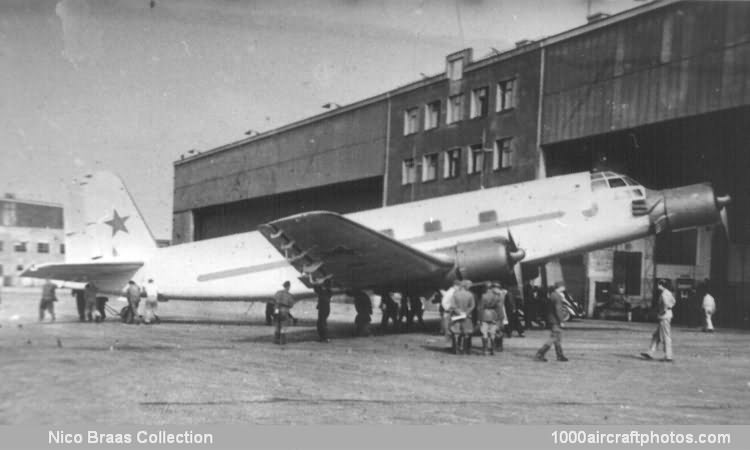08/31/2012. Remarks by Johan Visschedijk: "By 1943, the German aircraft industry had begun to suffer from a lack of light metal alloys, and it was decided that in all aircraft, apart from actual combat types, as little use of these materials as possible should be made. One of the larger non-combatant types at this time was the Ju 252 which was redesigned to make use of mixed wood and steel construction with fabric covering. The resultant aircraft was the Ju 352 which, although similar in outline to the Ju 252, had new angular vertical tail surfaces and square in place of semi-circular cabin windows.
The Ju 352 was fitted with the hydraulically-operated Trapoklappe (Transportklappe, loading ramp), which, when lowered, raised the tail of the aircraft off the ground. The ramp was positioned below the rear fuselage and was hinged at the front to allow a Kübelwagen (Kübel=bucket) scout car to be driven directly into its hold. The center part of the ramp incorporated a stairway and the aft edge provided an auxiliary skid in the event of a belly landing.
The prototype Ju 352 V1 flew for the first time on October 1, 1943, from the Junkers factory at Fritzlar. This aircraft and the Ju 352 V2 were each powered by three 1,000 hp Bramo 323R-2 air-cooled radials which could be boosted to 1,200 hp by water-methanol injection. The two prototypes were followed by ten Ju 352 A-0 pre-production aircraft which also bore the experimental numbers V3 to V12; in service the Ju 352s were nicknamed "Herkules" ("Hercules"). The aircraft had one 0.787 in (20 mm) MG 151/20 cannon in the EDL 151 dorsal turret and provision for two 0.511 in (13 mm) M G 131 machine guns firing through the cabin windows.
A total of 33 Ju 352 A-1 production aircraft were delivered between April and September 1944. The projected Ju 352 B-1 and B-2 with 1,800 hp BMW 801 radials were not built.
Apart from use by the agent-dropping I./KG 200, the only unit to receive the aircraft in numbers was the special Ju 352 Gruppe under Major Günther Mauss, ex-commander of I./TG 5. Mauss' unit operated supply missions over East Prussia, Kurland and Schieswig-Hoistein, and at the end of the war was based at Tutow, south-east of Rostock.
The pictured Ju 352 A-1 was rebuilt in Czechoslovakia after the war and flew to Moscow in 1946 with Russian markings."
